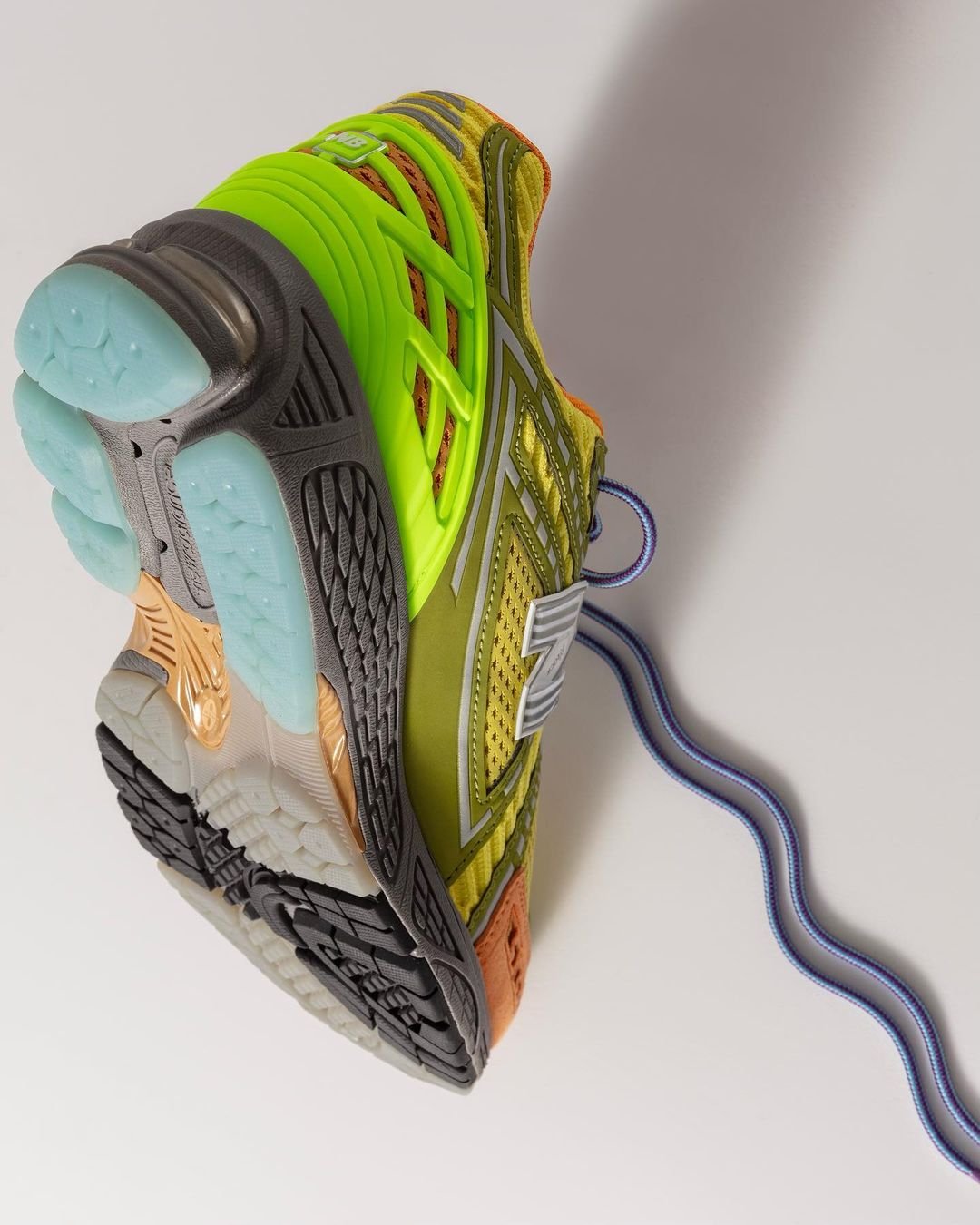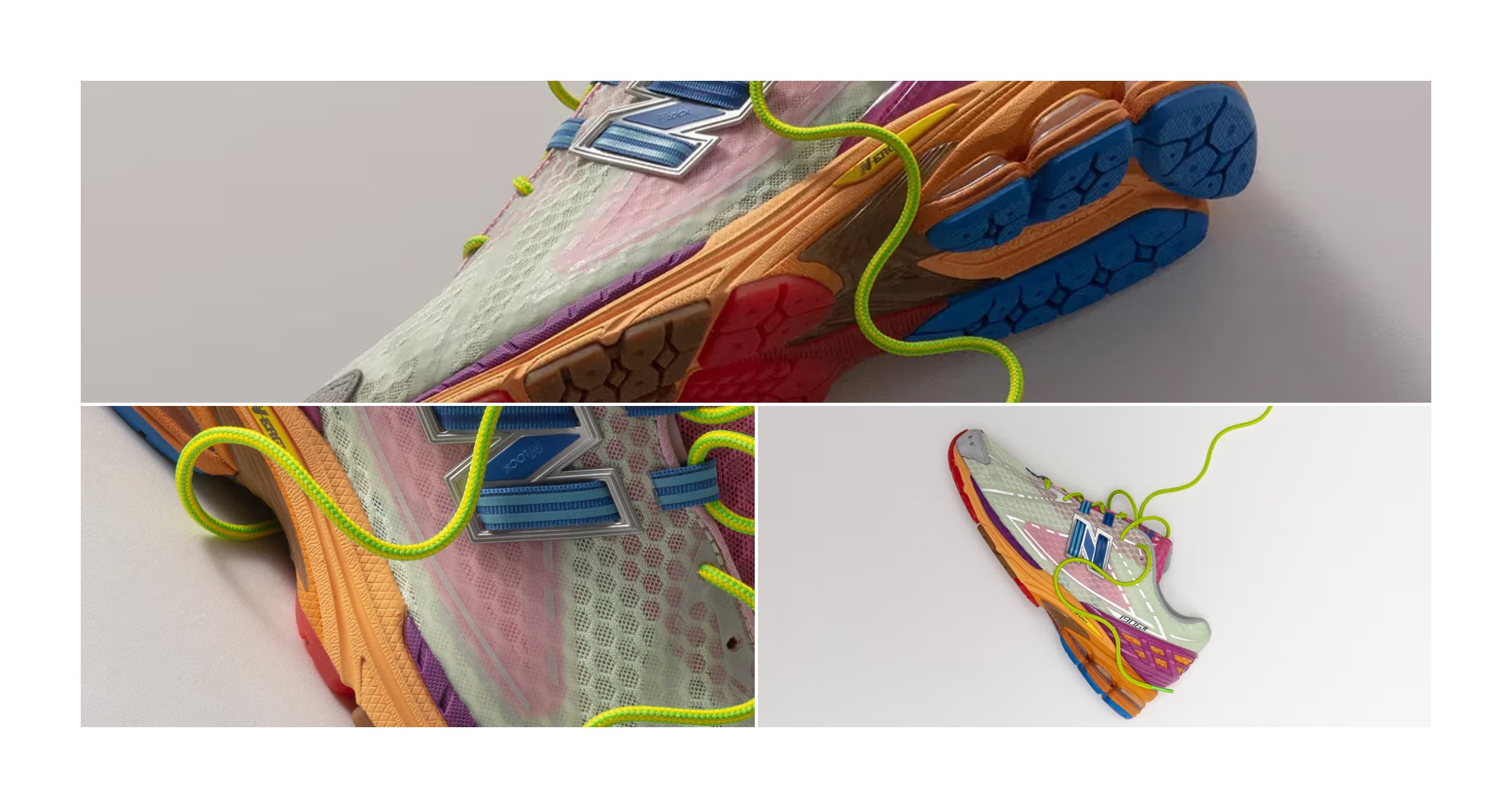Summer Stories: The Collaborator Catch-22
Summer 2024 is off to a blistering start. The past month has seen two of the year’s most anticipated projects release. Action Bronson dropped his three-pack of New Balance 1906Rs and Nina Chanel released her Air Jordan 3. While both were widely touted as potential sneaker of the year candidates, they were not without controversy. Each of these releases were the second installment in their respective artist’s sneaker collaboration portfolio. In 2023, Action delivered what sneakerheads held to be one of the best sneakers of the year, with the New Balance 990v6 ‘Baklava’. Later in 2023, he followed up with the 990v6 ‘Lapis Lazuli.’ Both sneakers were colorful and explored palette combinations that shouldn’t have worked but somehow did. These eye-catching sneakers also helped sneakerheads be more receptive to the 990v6 model overall, as it had previously drawn similarities with Hoka. Nina Chanel also has prior work with Jordan Brand. In 2022, she dropped a pair of Air Jordan 2s. This capsule featured both a Jordan 2 High and a Low. The majority of Nina’s work features densely layered vibrant paintings, but these sneakers offered a paired-down minimalist style. The simplification of the design created a more refined and high-fashion feel to the sneakers. With the momentum that these projects generated, both artists were rewarded by the brands and received the green light for a second project. As we turned the page and entered 2024, sneakerheads waited eagerly to see what the encore would provide.
When the shoes were officially revealed by Bronson and Chanel, the reaction was unanimous: “better than the first.” Both projects were expertly executed and as release day approached, excitement grew. Bronson went first with his introductory colorway the ‘Rosewater.’ It was released on May 31st and excitement quickly turned to frustration. The shoes were released on Bronson’s website but the password protecting the site before the drop was weak. People were able to guess the code and buy the shoes successfully and early. When the scheduled release time arrived and Bronson provided the website information the shoes were already sold out.
Next up was Bronson’s ‘Scorpious.’ This drop was essentially a friends and family release that Bronson made available to his “most loyal fans.” While the chance to buy such a limited shoe was exciting, was there even a chance? What were the criteria for being selected? These questions went unanswered.
The third and final Bronson New Balance was the ‘Medusa Azul.’ After taking to Instagram to promise fans he was doing everything he could to release the shoes fairly, the Medusa Azul was released via raffle through EQL Run Fair. EQL is a third-party system that runs sneaker releases on behalf of brands or artists and ensures equity by putting each participant to the test. According to EQL FAQs, “every entry goes through a multi-step security verification process that confirms you are not a bot or bad actor.” While this was the most successful of the three Bronson drops it was still not without its flaws. The raffle was open for twenty-four hours, allowing for innumerable amounts of entries.
Nina Chanel and her Air Jordan 3 ‘BiCoastal’ drop came next. She seemed to have learned from Bronson, as she also used a raffle on her website to release the shoes. Originally, it was only slated to be open for one hour. However, this quickly dissipated into disaster. Sneakerheads were unable to enter the raffle and it was open for hours on end to allow people additional time to submit their entries. Like Bronson, Nina also took to Instagram to address the situation calling what occurred, an “unordinary malicious attack.” Both artists took steps to ensure fair delivery of the product to the consumer, and yet both projects experienced difficulty, if not failure of the release process. Why was the effort to maintain release integrity so involved and yet come release day these measures were rendered unsuccessful?
In the sneaker universe collaborations are often the most highly sought after products. They are unique colorways or new twists on popular models and they are more limited than standard drops. They also do not retro, meaning purchasing them is a once-in-a-lifetime opportunity. Sneaker collaborations introduce sneakers to new audiences, fans of Nina Chanel and Action Bronson may not be sneakerheads but because of their association with the artists, fans still may covet the shoes. Outside actors consequently flock to the sneaker space and participate in the release. All of these ingredients create sneakers that carry more demand than any other release. Usually, the artist will release the shoes on their website as did Bronson and Chanel. As they should, it’s a project they worked long and hard on and they want to deliver the product to their fans. The often negative release experience provided by the big brands has caused sneakerheads to question whether brands truly care about getting the sneakers to true fans. Having a chance to cop shoes through a different entity is a breath of fresh air.
As we have seen over the past month, artists may be more compelled to give fans a smooth release, but good intentions don’t automatically yield results. This is because these artists cannot cater to the demand swell that their websites endure during a release. Collab releases draw far greater levels of interest than general release sneakers and certainly much more traffic than the artists’ website traditionally has to support. Typically Bronson or Nina Chanel’s sites only sell merch or other items on their platforms and those interested in purchasing are only fans of them. On an average day, these websites that artists have don’t attract the droves of users that hit the sites on a sneaker release day. Consequently, they are not built to accommodate such usage and the systems break down. Even while writing this Union LA was forced to postpone their drop of the Nike Field General due to technical difficulties.
Because of the cynical view sneakerheads have of the Nike, New Balance, and Adidas (etc.) release process when collaborations come around the expectation is that the artist will drop them on their site. If they don’t it is often met with disappointment. Sneakerheads often believe their chances of copping through these mediums are higher. When release day comes, however, the feedback is often not much better than after standard drops. Until the day comes when sneakerheads don’t want limited edition shoes, collaborative partners of the brands are stuck between this rock and a hard place. Damned if you damned if you don’t.



















